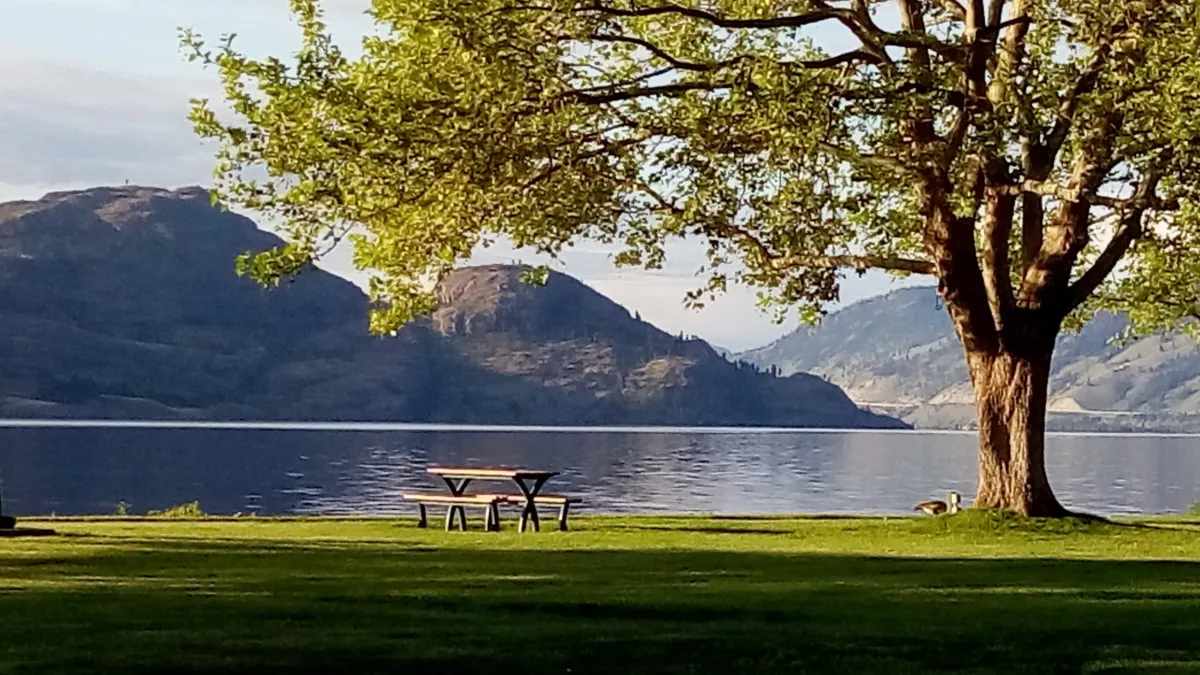
Foreshore Permit Mini-Guide
“Foreshore - can you use it - and the high water mark - what you need to know.” - Angela B
Foreshore Permit Mini-Guide:
How to Obtain Lakefront Foreshore Rights in British Columbia: An Overview
Are you a landowner wishing to have exclusive access to the foreshore of a beautiful lake or river in interior British Columbia?
Perhaps you want to build a dock, swim, or fish or you're thinking you won't have to share the space with the public.
Whatever your reasons may be, acquiring the right to use this prime waterfront real estate can be a complicated process.
This mini-guide will outline for you some of the steps you need to take to obtain lakefront foreshore rights in BC.

Before we begin, it’s critical to understand what foreshore rights are and why they matter. Foreshore refers to the land bordering a body of water that is regularly covered and uncovered by tides or water levels. Without the proper authorization, private landowners do not automatically have the right to access or build structures on this land.
Acquiring the right to foreshore access can significantly increase the value of your property and allow you to enjoy its recreational activities. It's important to note that, in British Columbia, all foreshore lands below the high water mark are the property of the Crown and can only be accessed through a permit or tenure issued by the Ministry of Forests, Lands, Natural Resource Operations and Rural Development (FLNRORD). Once granted, tenures and permits are typically valid for twenty-five years, and it's up to the licensee to renew them. Additionally, if your lands are on "navigable waters", you will need the approval of the Canadian federal government.
So, how do you acquire a foreshore permit or tenure?
Here are the steps you need to take:
Determine eligibility for foreshore rights
Before you invest time and money in getting a foreshore tenure or permit, make sure you are eligible. Landowners who can apply for foreshore rights include those with a habitable permanent residence on private land bordering a body of water. In some cases, land that borders on navigable rivers or lakes may also be eligible.Hire a shoreline professional
To get foreshore rights, you will need to submit an application that includes several legal and technical documents. For these, it is highly recommended to hire a shoreline professional, such as a land surveyor or engineer who specializes in foreshore development. They will help you to identify, map, and assess the shoreline environment, determine the potential for erosion, and create a plan for development.Prepare a foreshore development plan
Creating a foreshore development plan is a crucial step in obtaining foreshore rights. Plans should reflect your desired use and take into account provincial law, environmental protection, and public access. Plans must demonstrate that the development proposed is safe, feasible, and environmentally sustainable. They should be made in consultation with local government, Indigenous communities, and stakeholders on issues that may affect the foreshore.Submit a foreshore requirements package
Once you have prepared the foreshore development plan, the next step is to prepare a foreshore requirements package to submit to FLNRORD. This package includes a shoreline development plan, surveys, environmental assessments, and cultural heritage assessments. Your shoreline professional can guide you through the process of arranging for the package's submission and provide an estimate of the costs.Wait for permissions from the Minister of Forests, Lands, Natural Resource Operations and Rural Development, and the federal government, if applicable.
Allow for some time for the approval process to run its course. The timeline for approval may vary depending on the level of development and geographic location. It can take up to a year to receive approval from the Ministry of Forests, Lands, Natural Resource Operations and Rural Development in some cases.
After receiving approval, FLNRORD will issue a foreshore lease, license, or tenure for the agreed-upon duration. The terms of these agreements typically include conditions on what can and cannot be done on the foreshore, including your obligations for environmental stewardship, public access, property rights, and length of tenure (usually 25 years). You will also receive a separate annual property tax assessment for that portion.
In summary, obtaining foreshore rights for any lakefront or river property requires a thorough, step-by-step, approach, with assistance from knowledgeable and experienced Qualified professional. (Boring? - Maybe - but if you want lakefront and use and access of the foreshore ... make the smart choice and hire the right people!)
If you are looking to buy a property that already has a constructed dock, boat launch or boat house, you will want to get verification of permitted works, a copy of the foreshore permit, and remember to have your lawyer draft proper documentation to have those permits extended to or transferred to you as the new owner.
Caution: If there are no permits in place for an existing dock or work on the foreshore, and you buy the property, you will likely be on the hook for the cost of its demise and to put the land back to it's natural state, not to mention having to start the application process for a new dock.
Remember alterations require appropriate approvals and permits.
As always, first ensure you've done your homework, and with a properly qualified shoreline/foreshore professional, you can take steps to get the property you want, and the required permissions to enjoy access to the beauty that awaits!

This article curated by Angela Brandenburg, Century 21 Amos Realty
Sources:
Government of British Columbia (2021). "Foreshore Permits for Private Property Owners. https://www2.gov.bc.ca/gov/content/industry/natural-resource-use/land-use/crown-land-reserves/foreshore-permits-private-property-owners
Government of British Columbia (2021). "Navigation and Foreshore". https://www2.gov.bc.ca/gov/content/industry/natural-resource-use/land-use/crown-land-reserves/navigation-foreshore
Coastal Resource Mapping Ltd. (2021). "How to get a Foreshore Lease, License or Tenure" https://coastalresourcemapping.com/how-to-get-a-foreshore-lease-license-or-tenure/
https://www.obwb.ca/fileadmin/docs/riparian_regulations_BC_Gov.pdf
https://tc.canada.ca/en/programs/navigation-protection-program/apply-npp